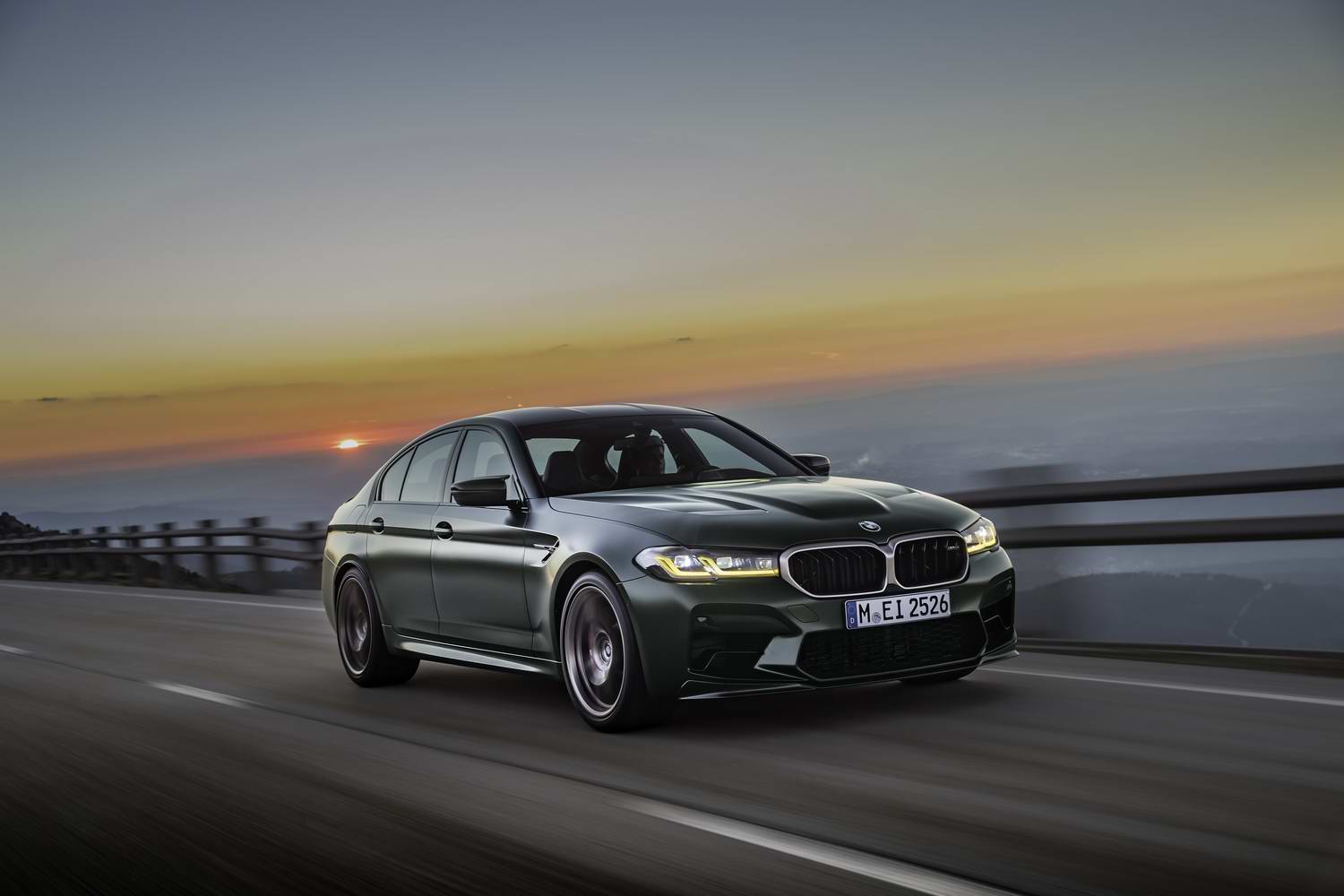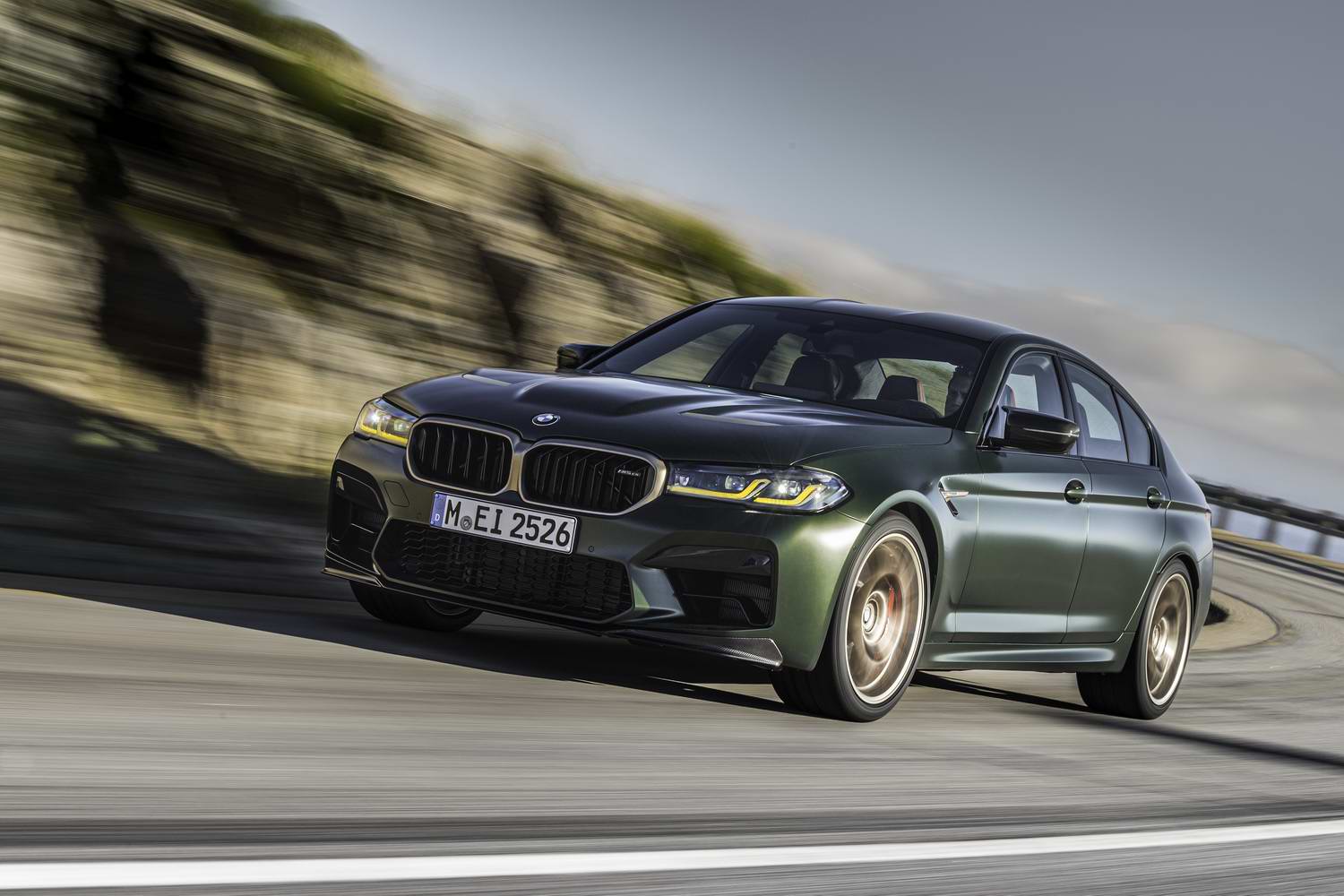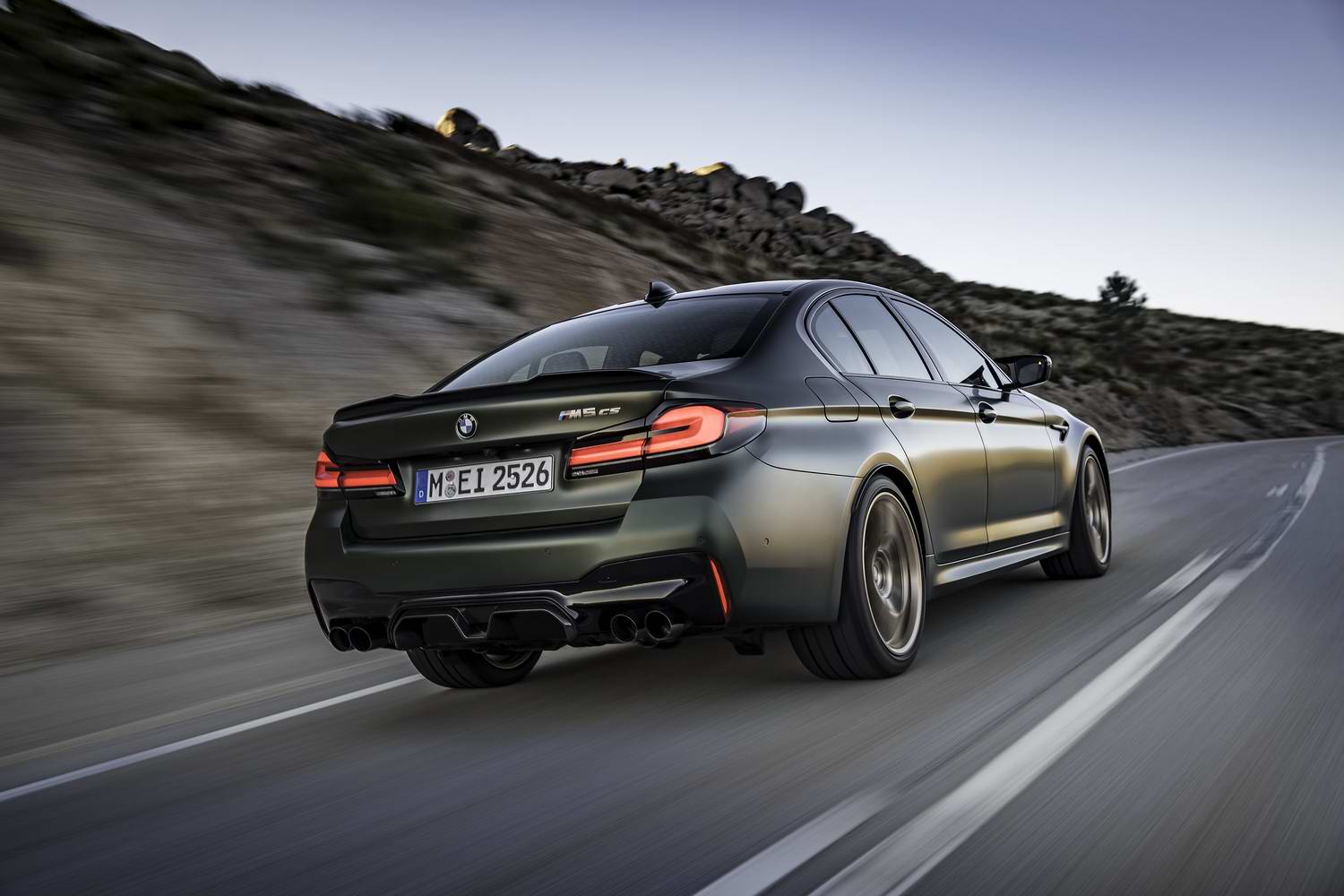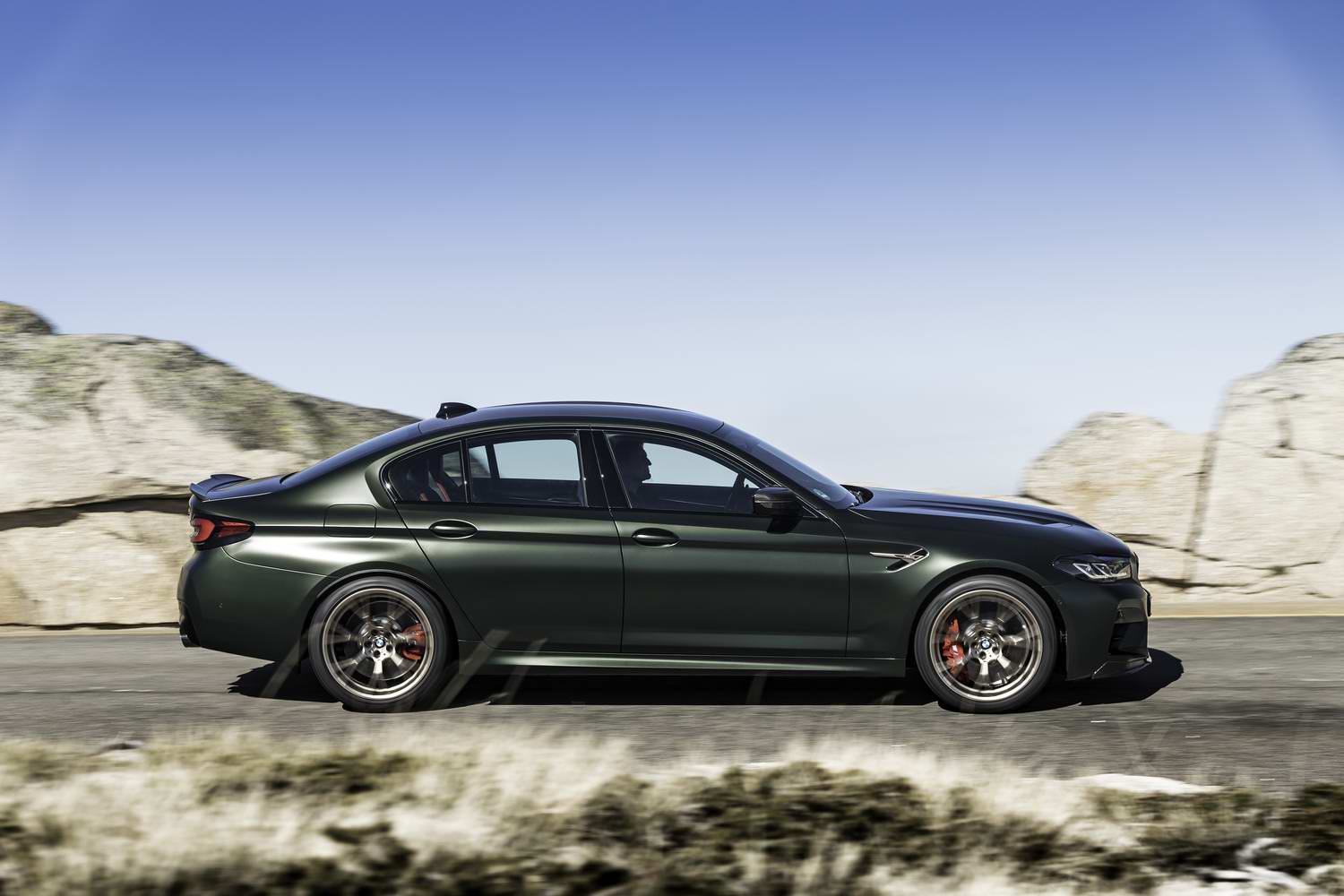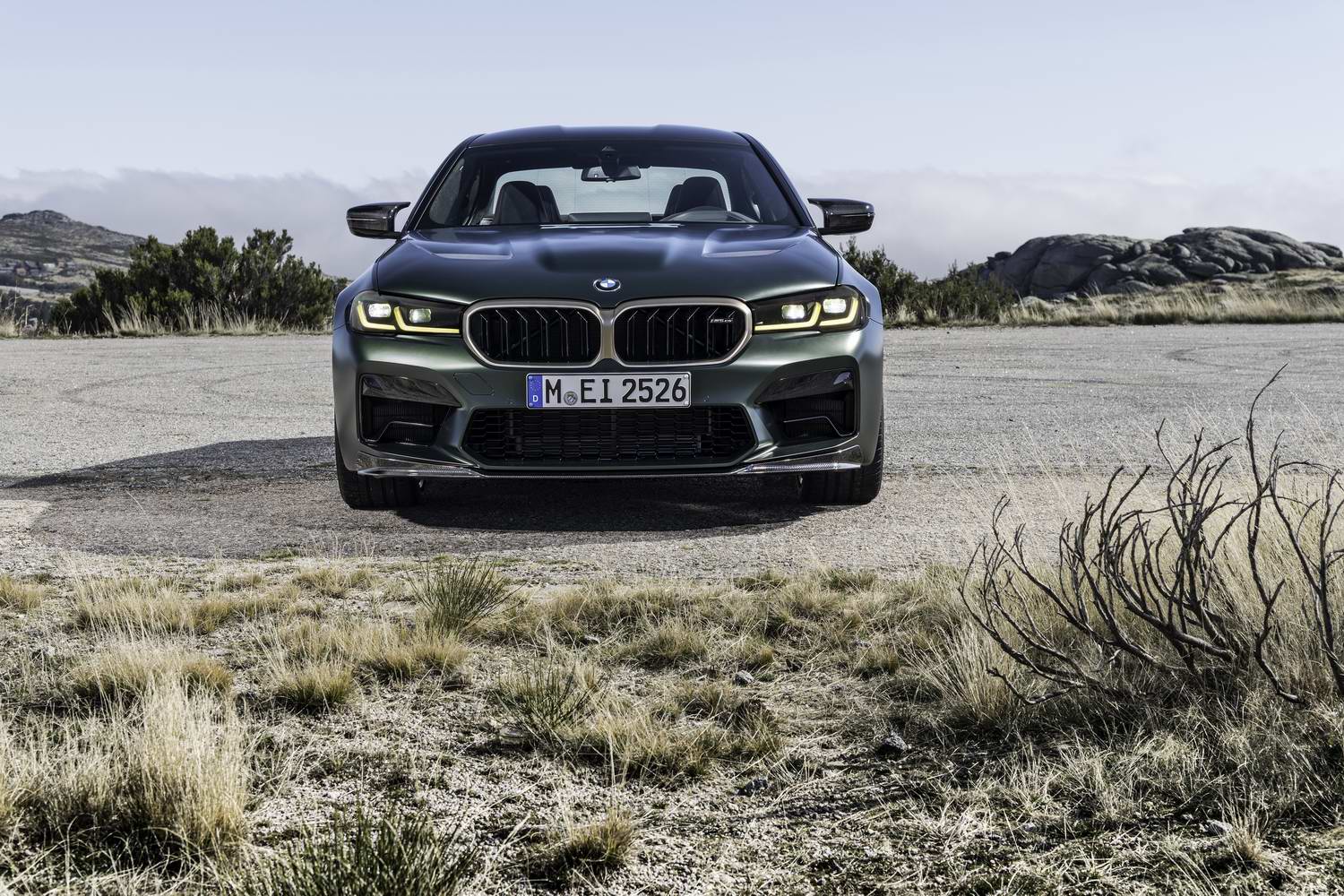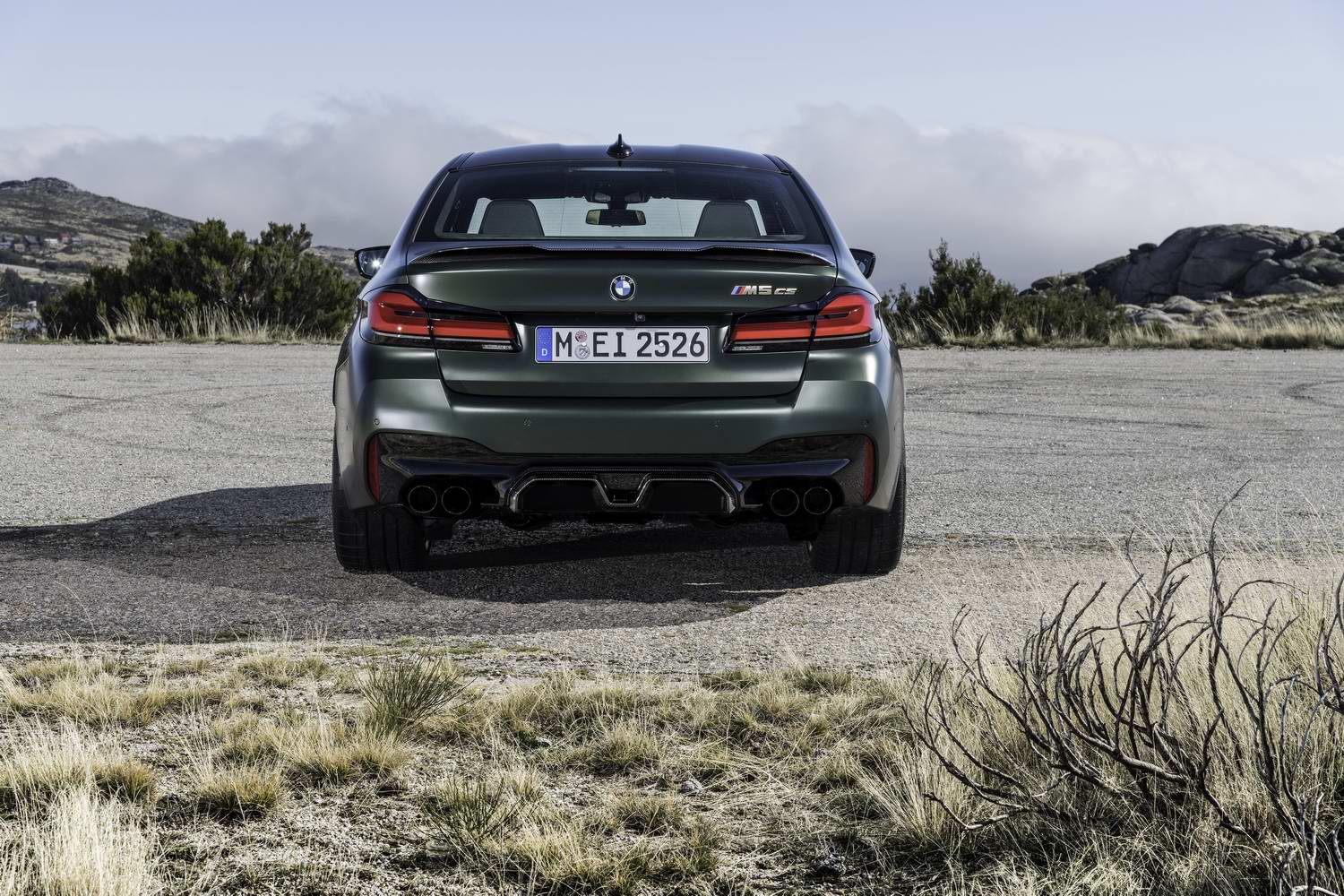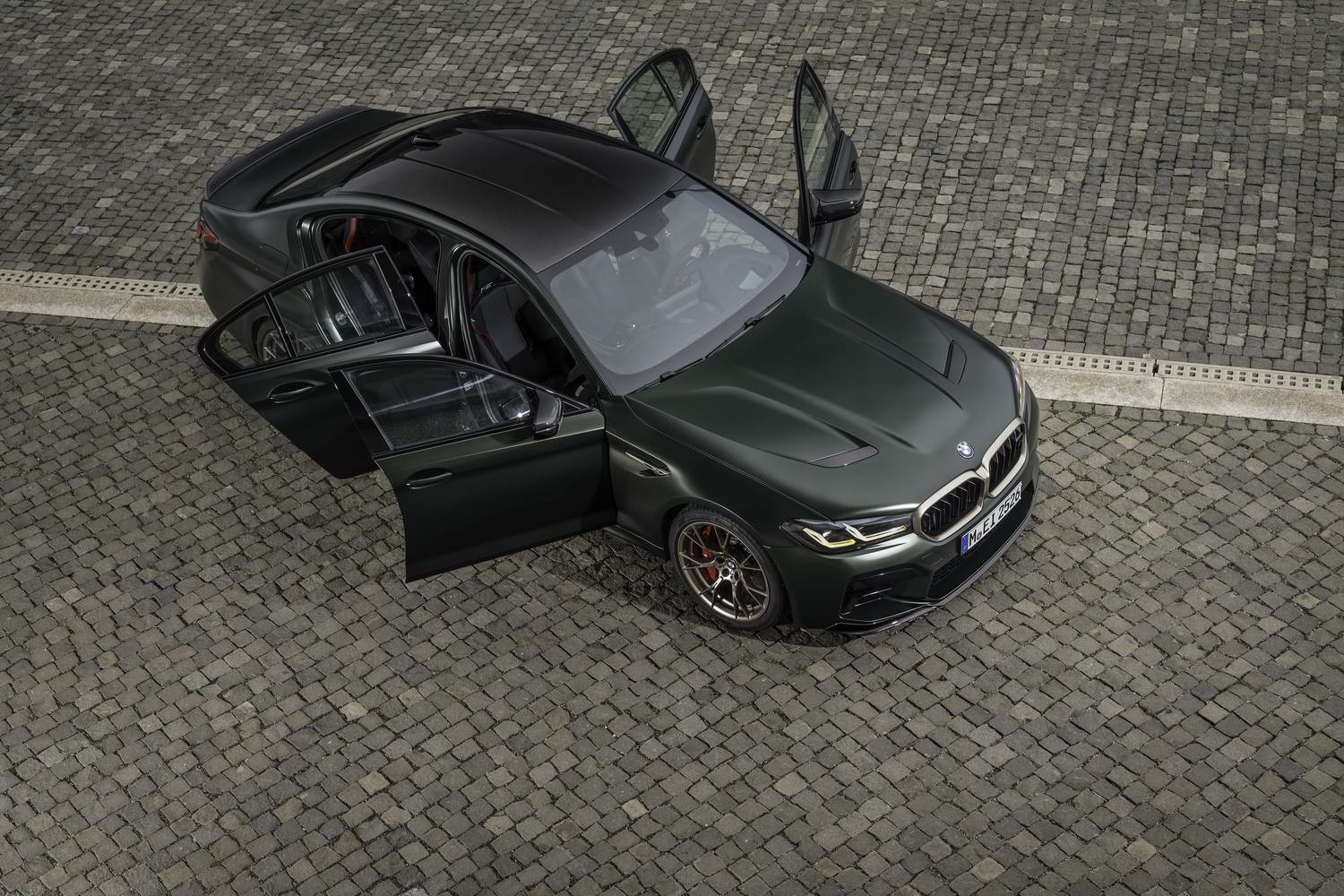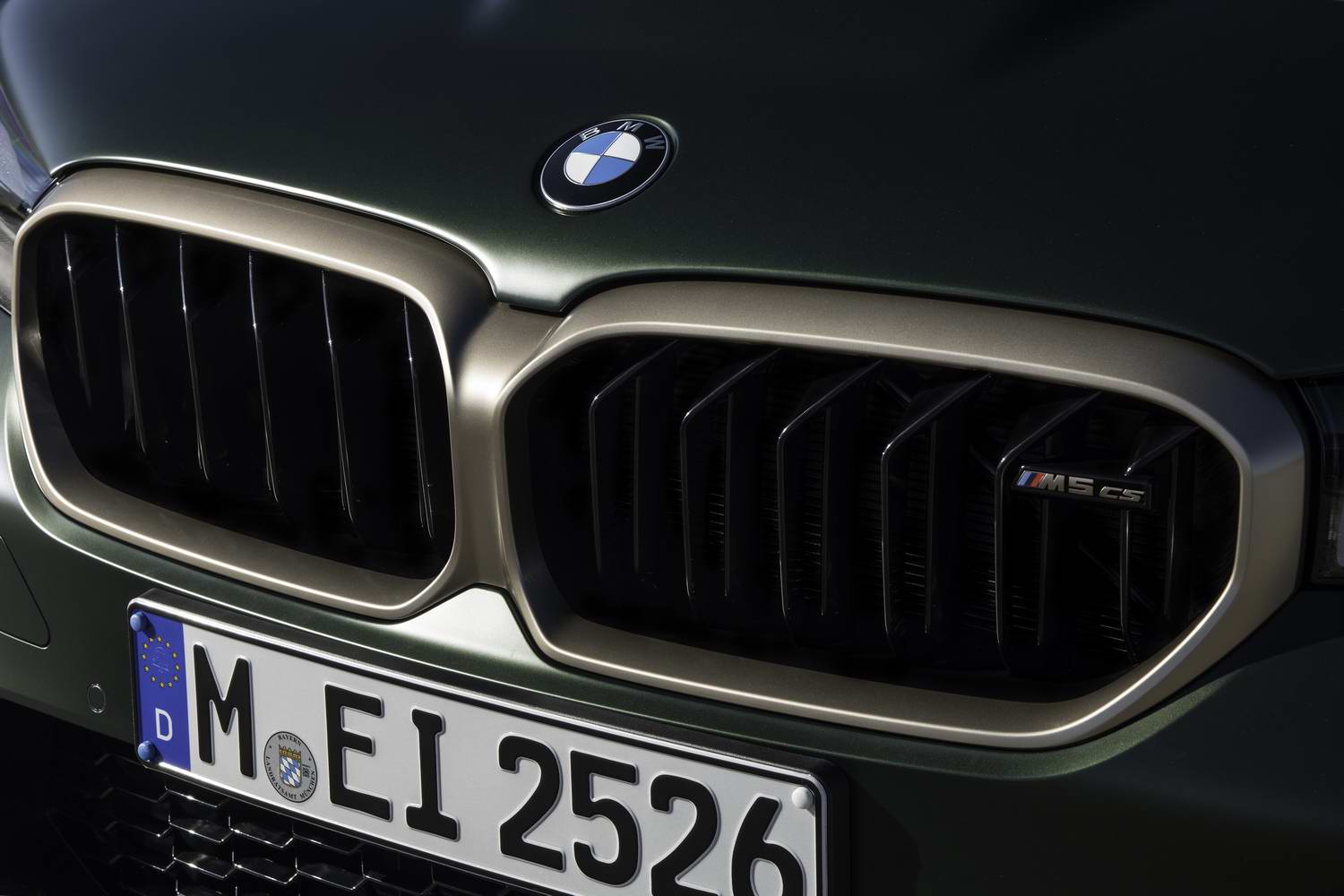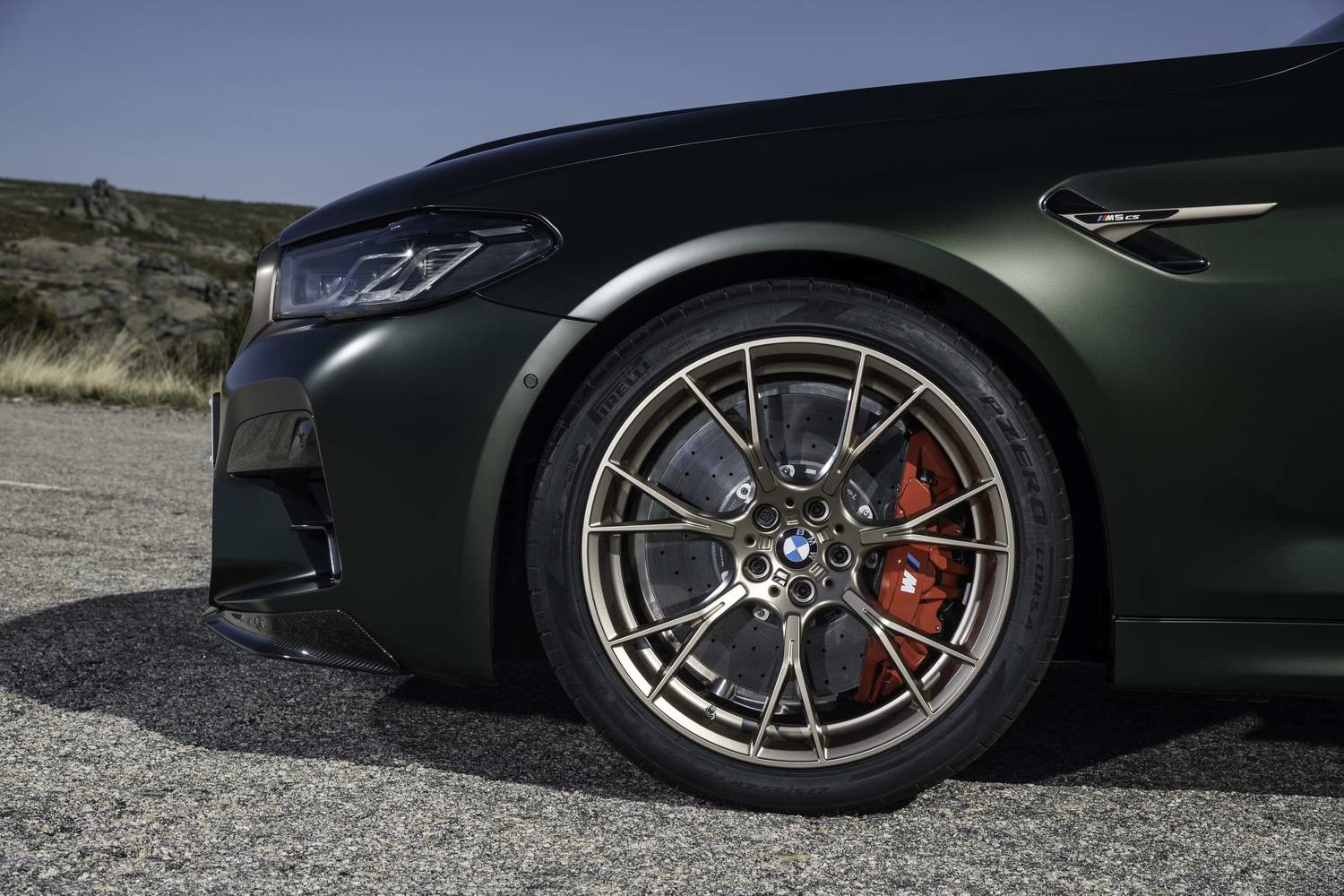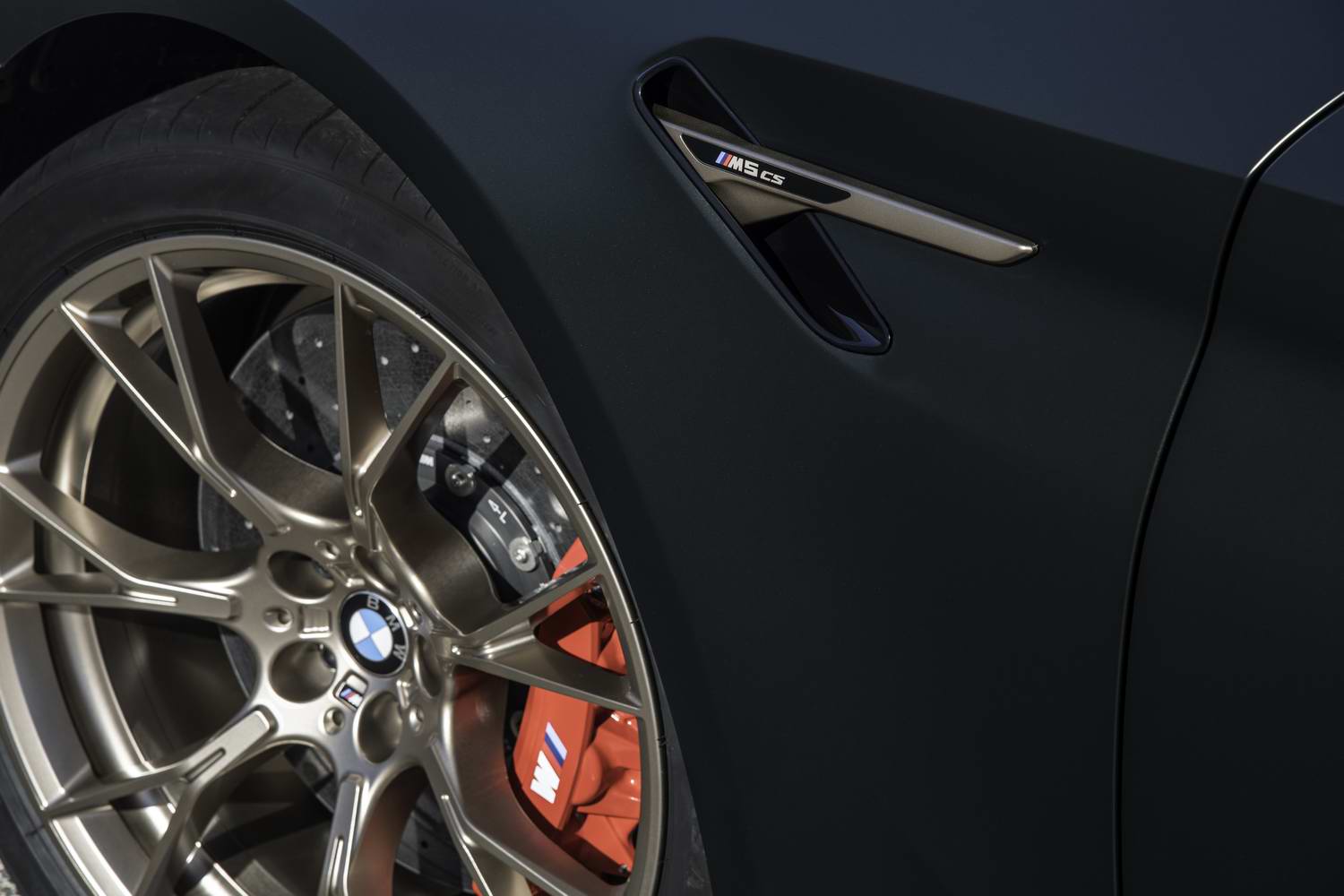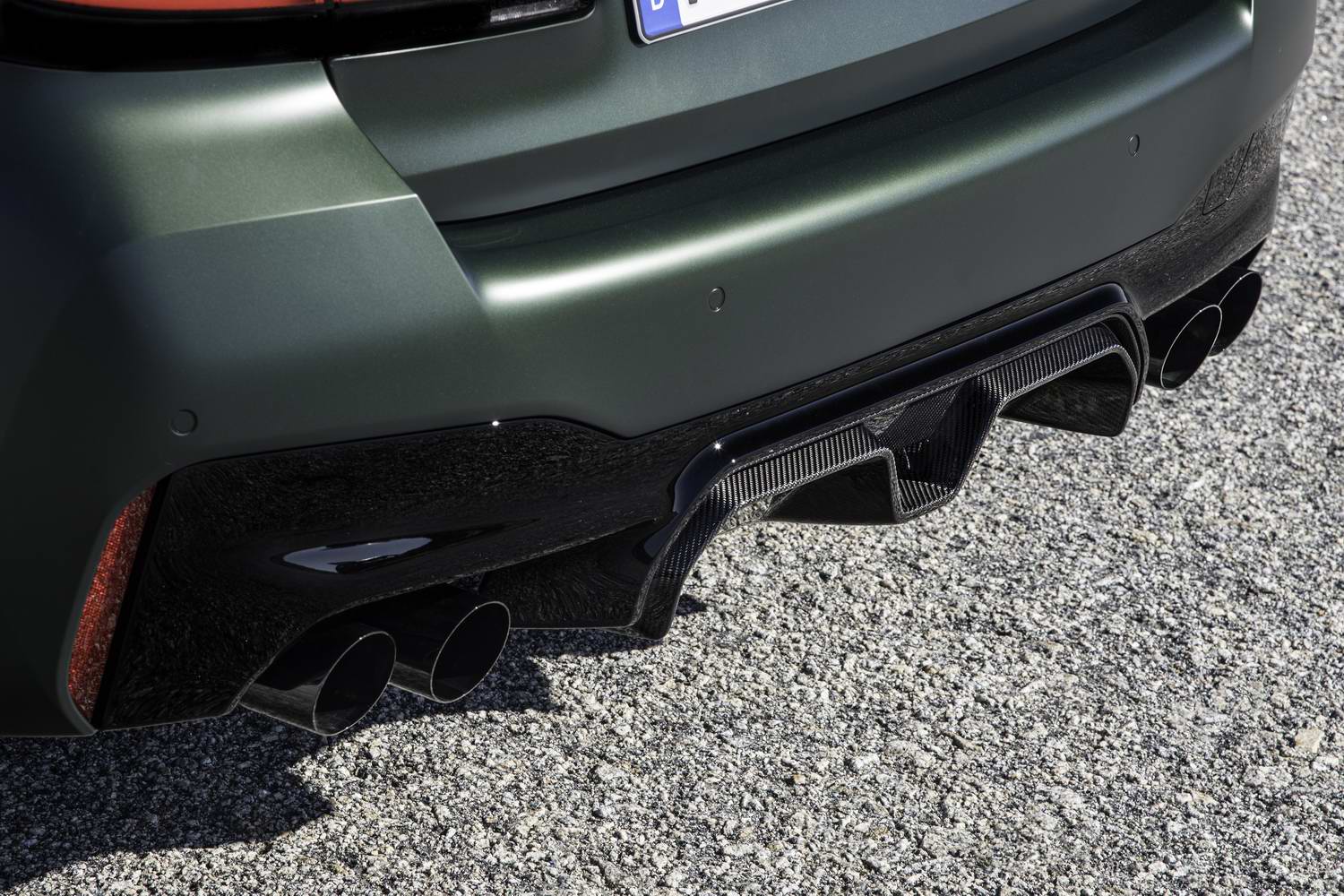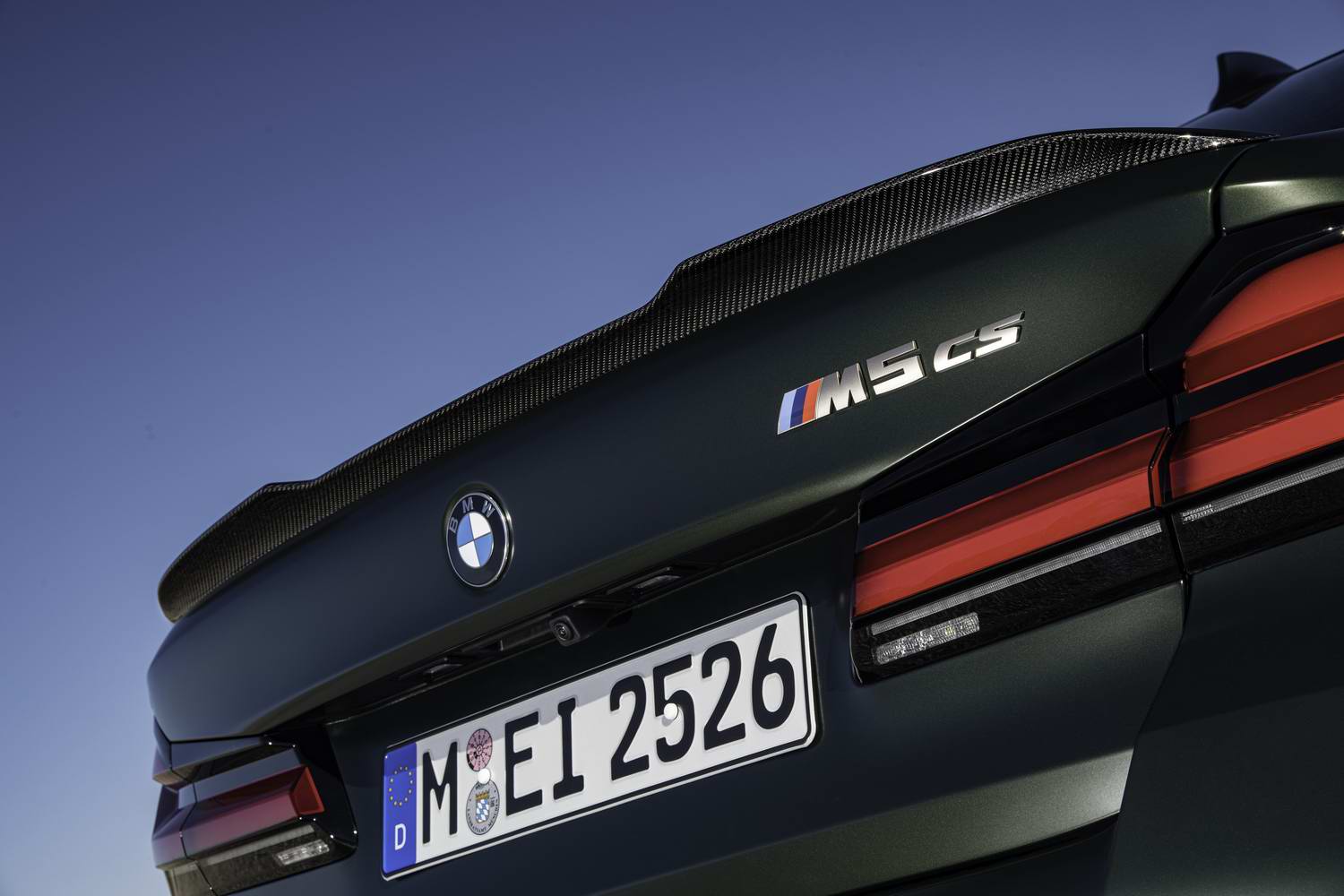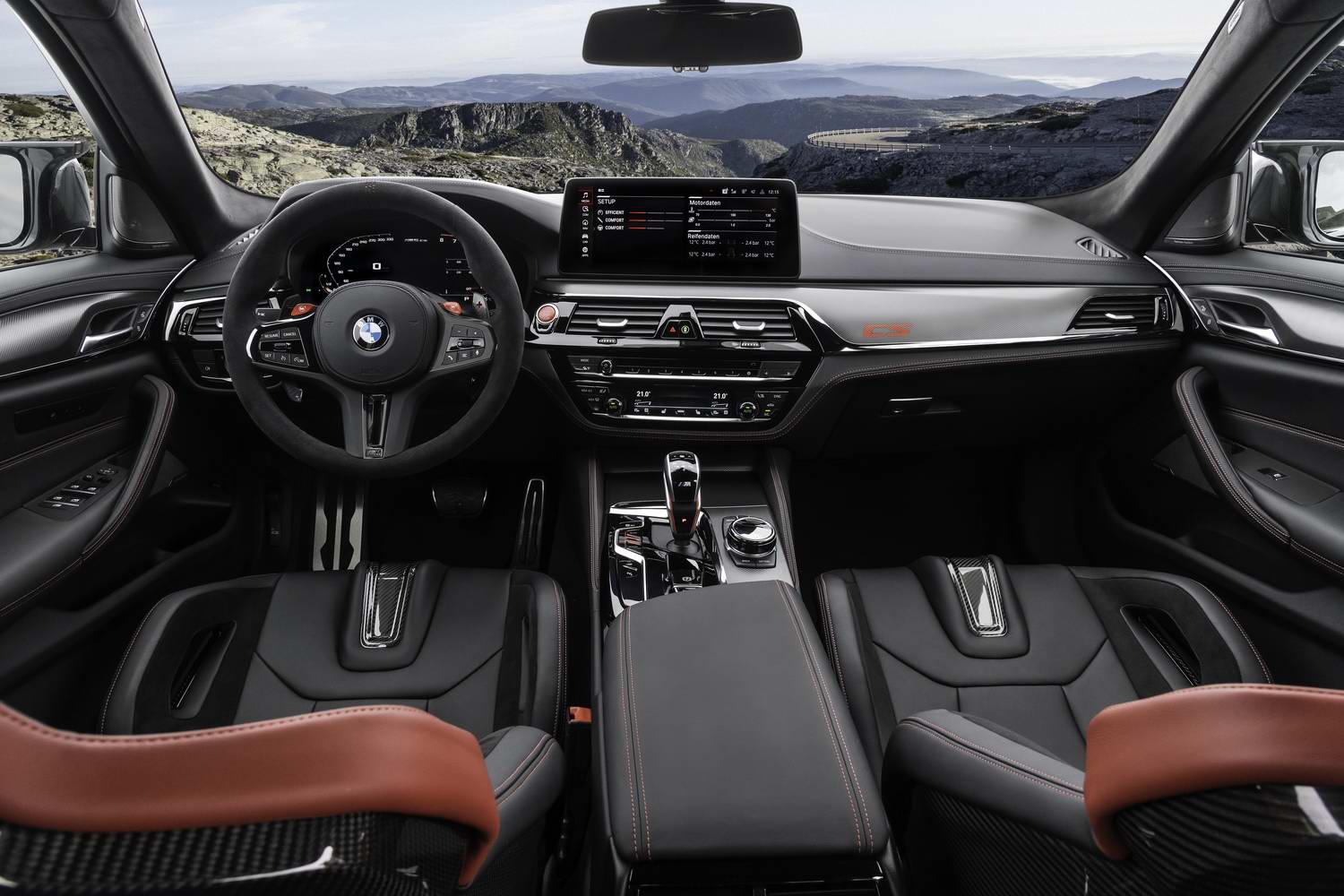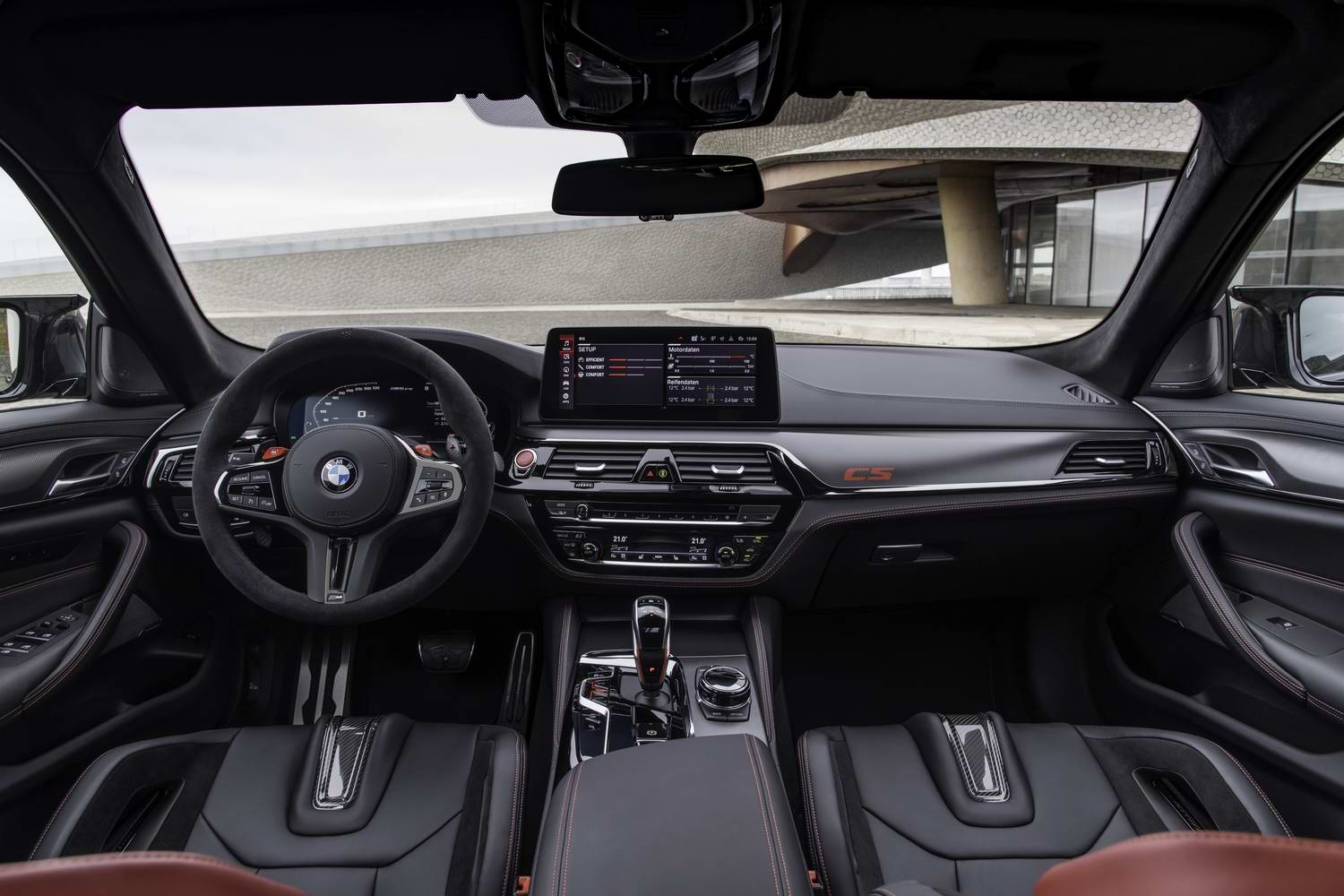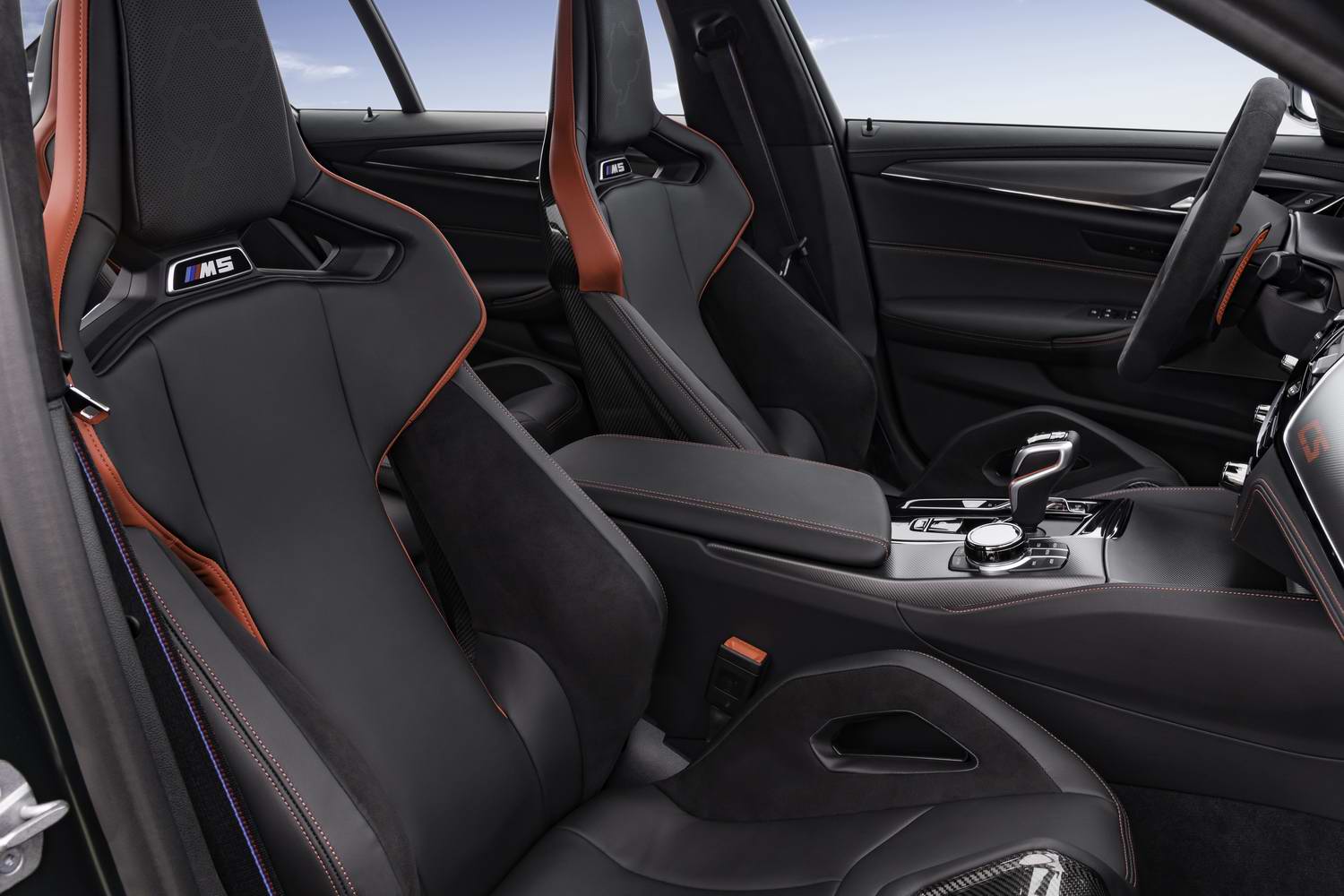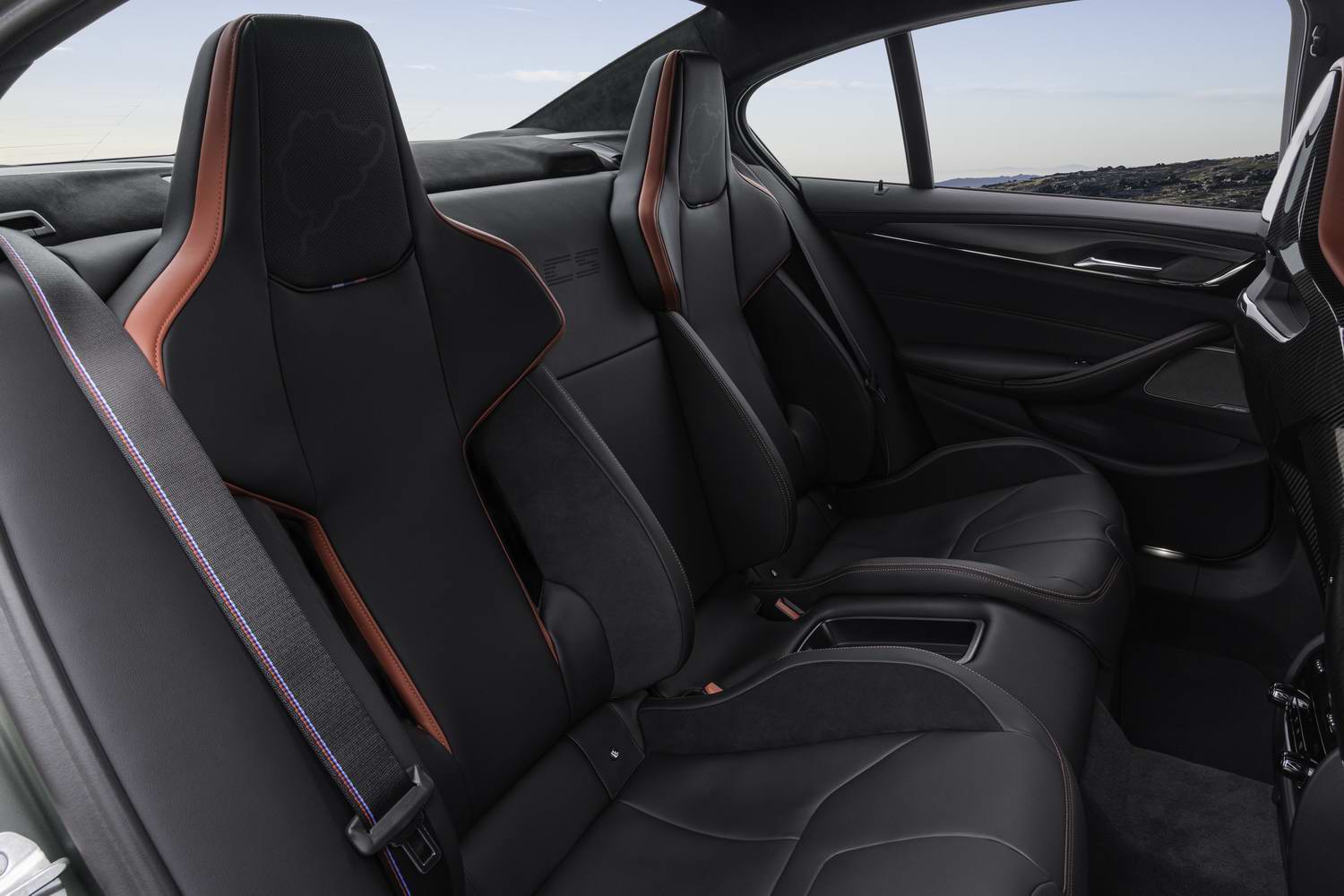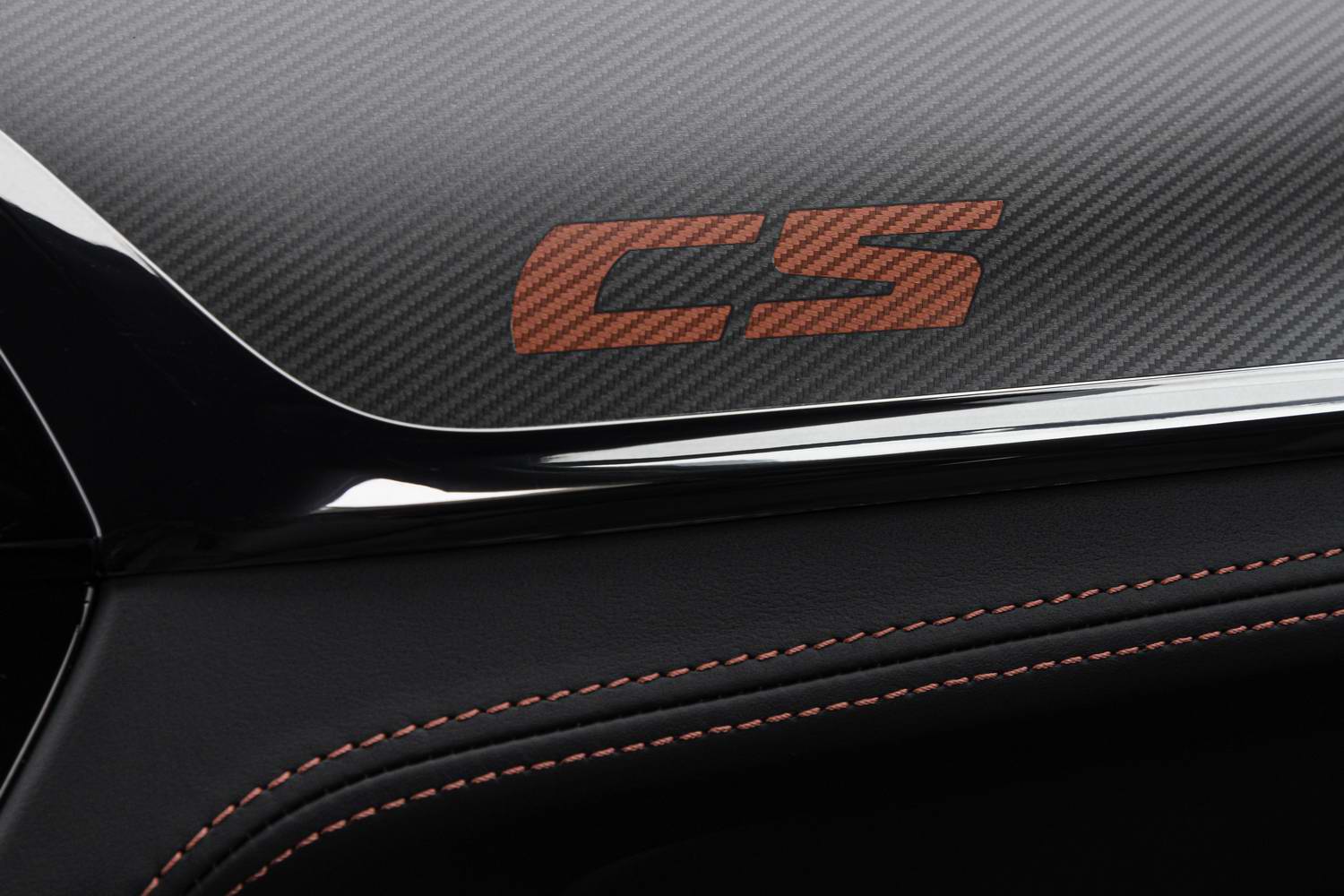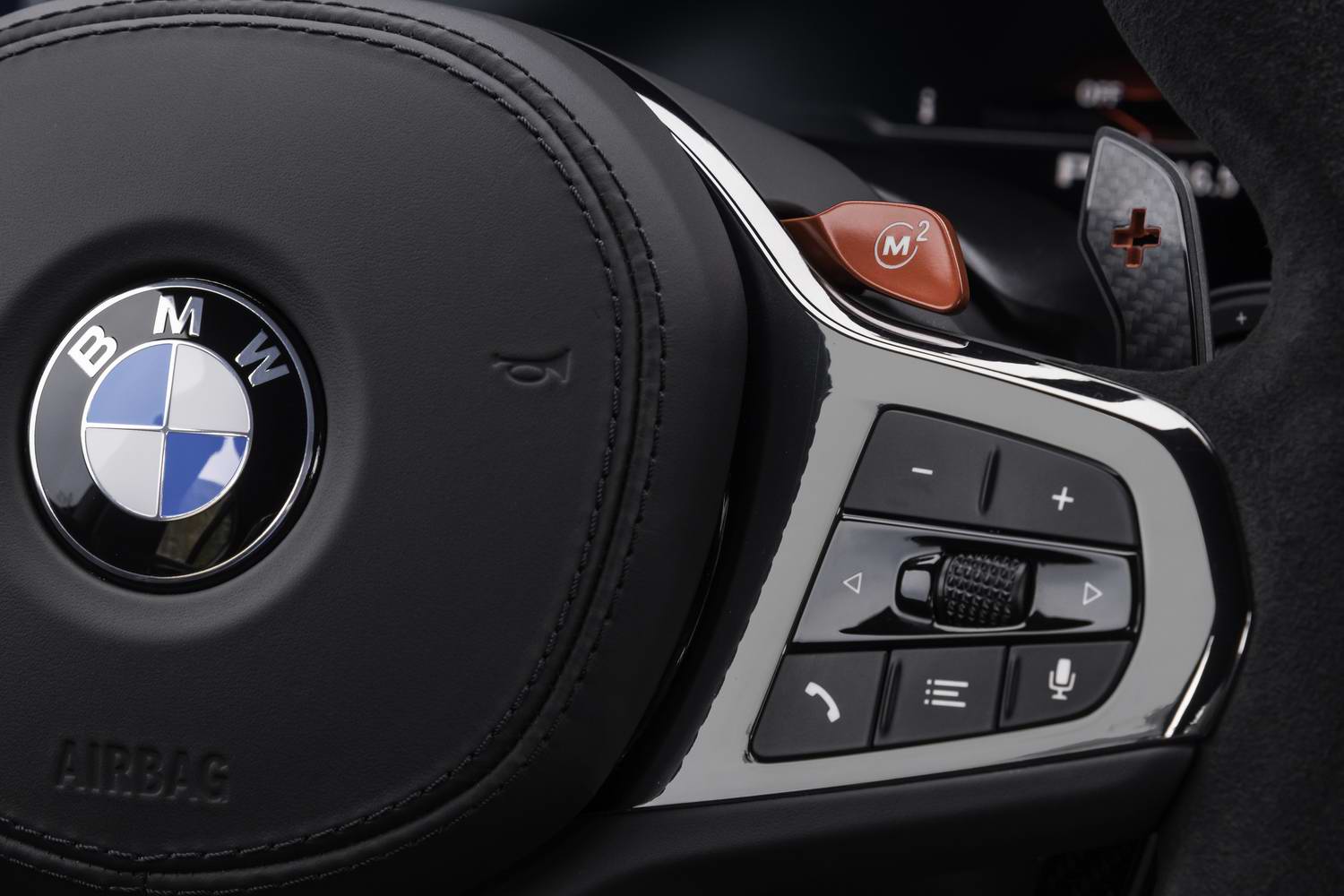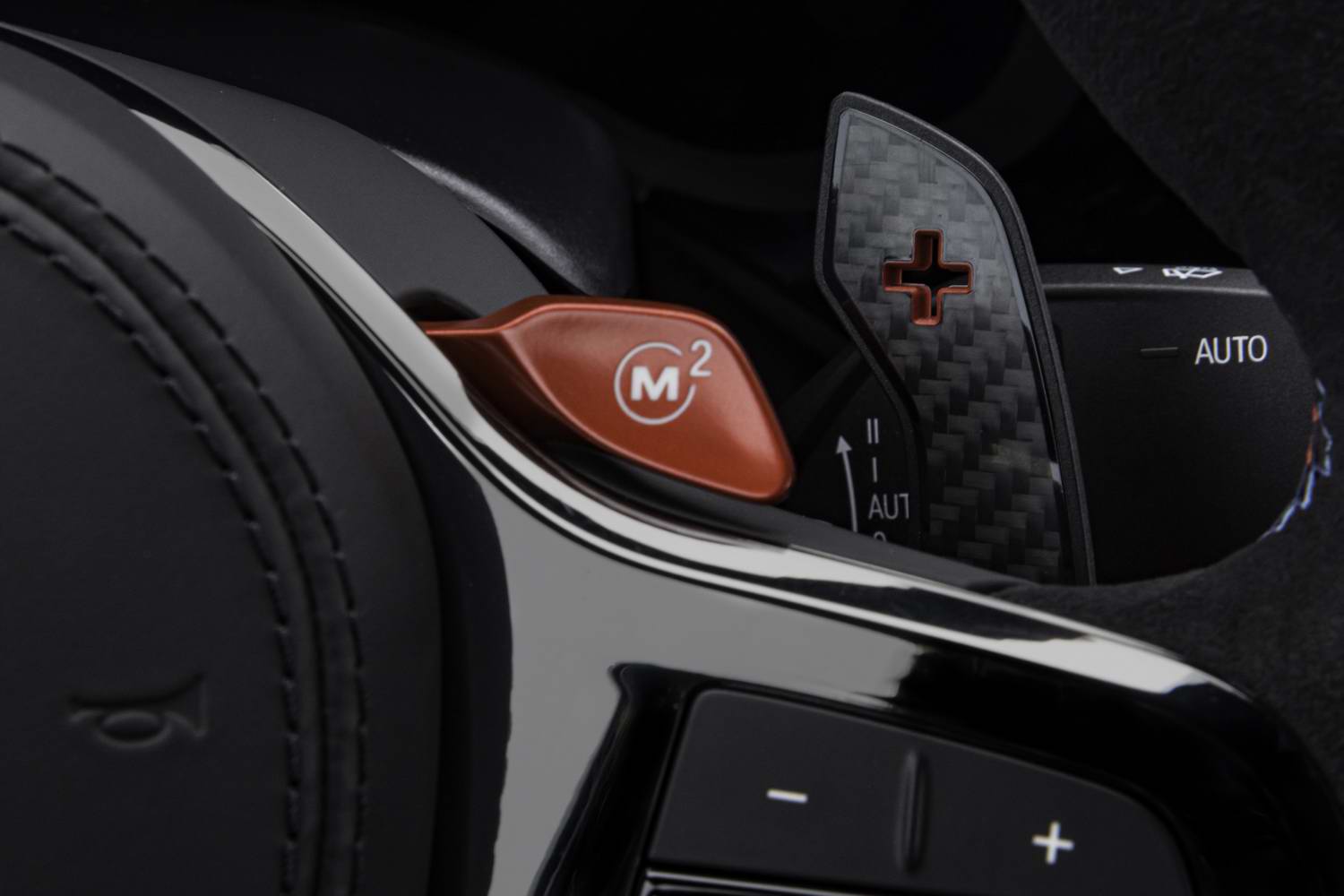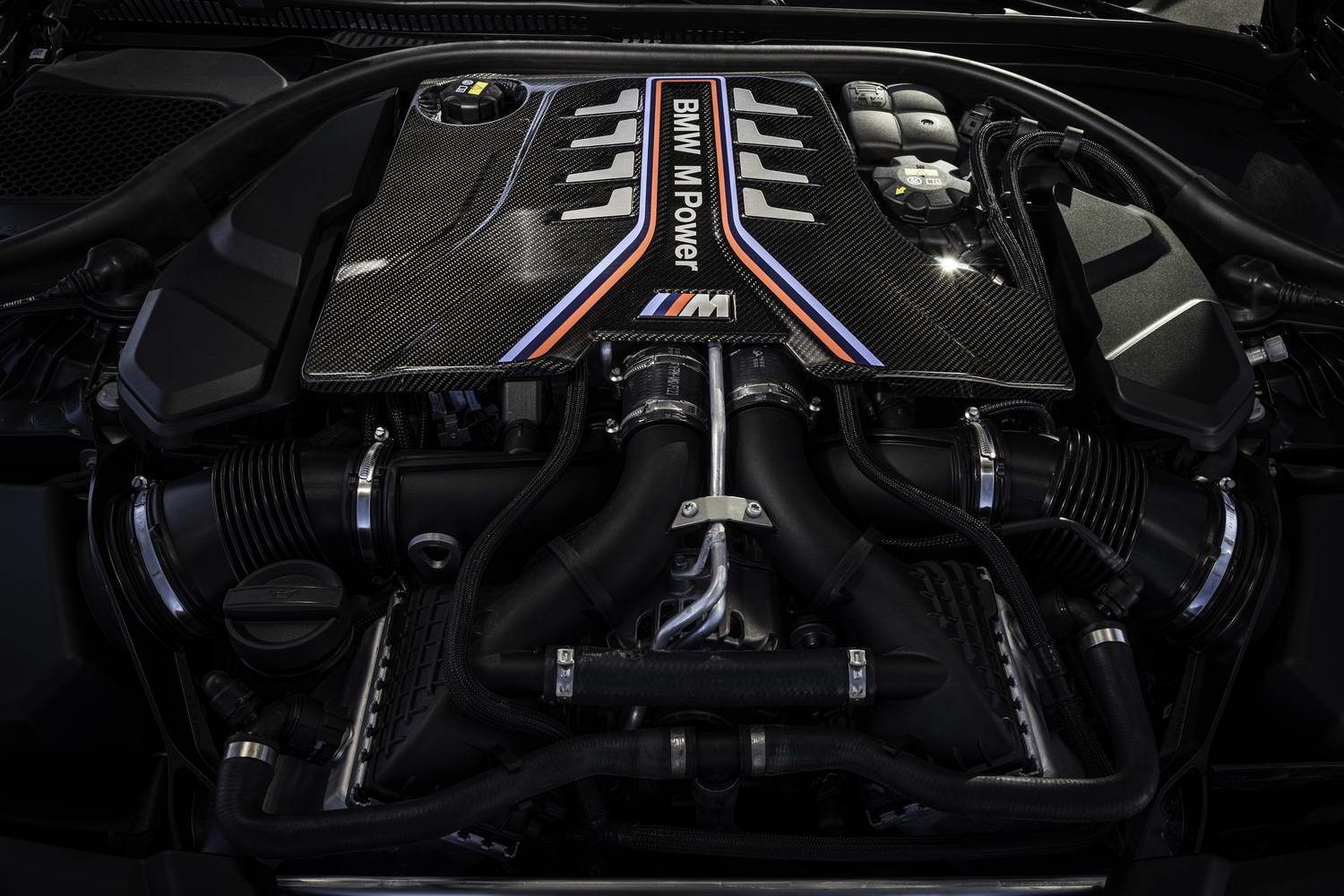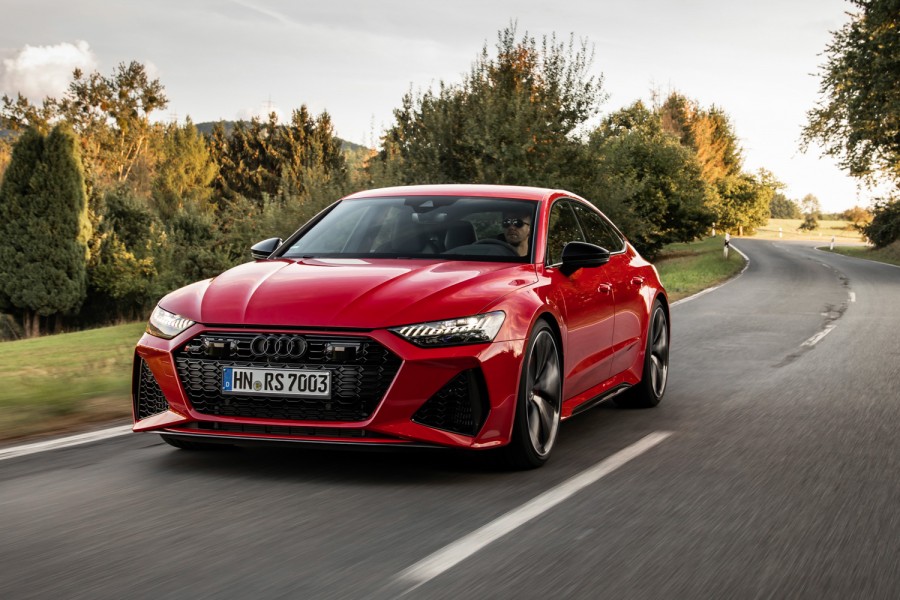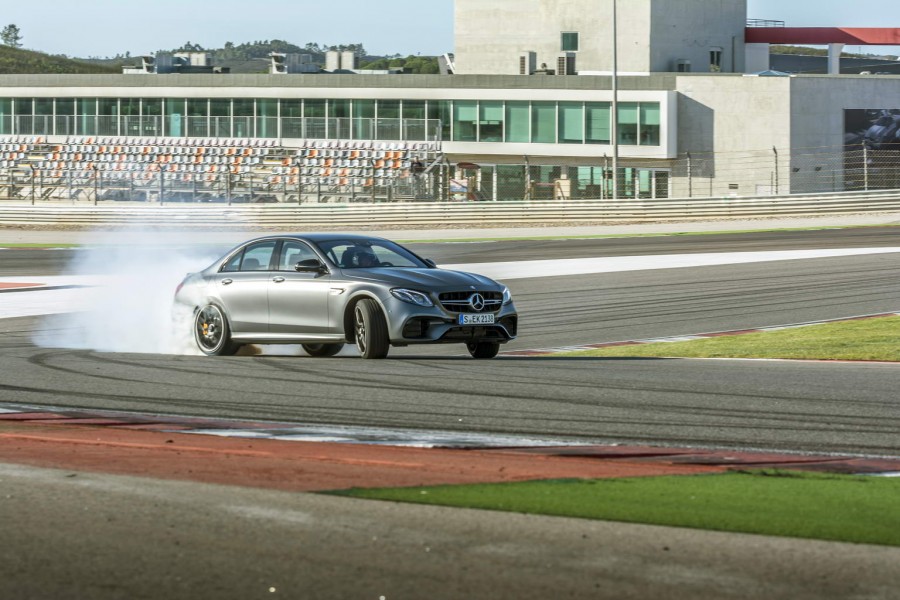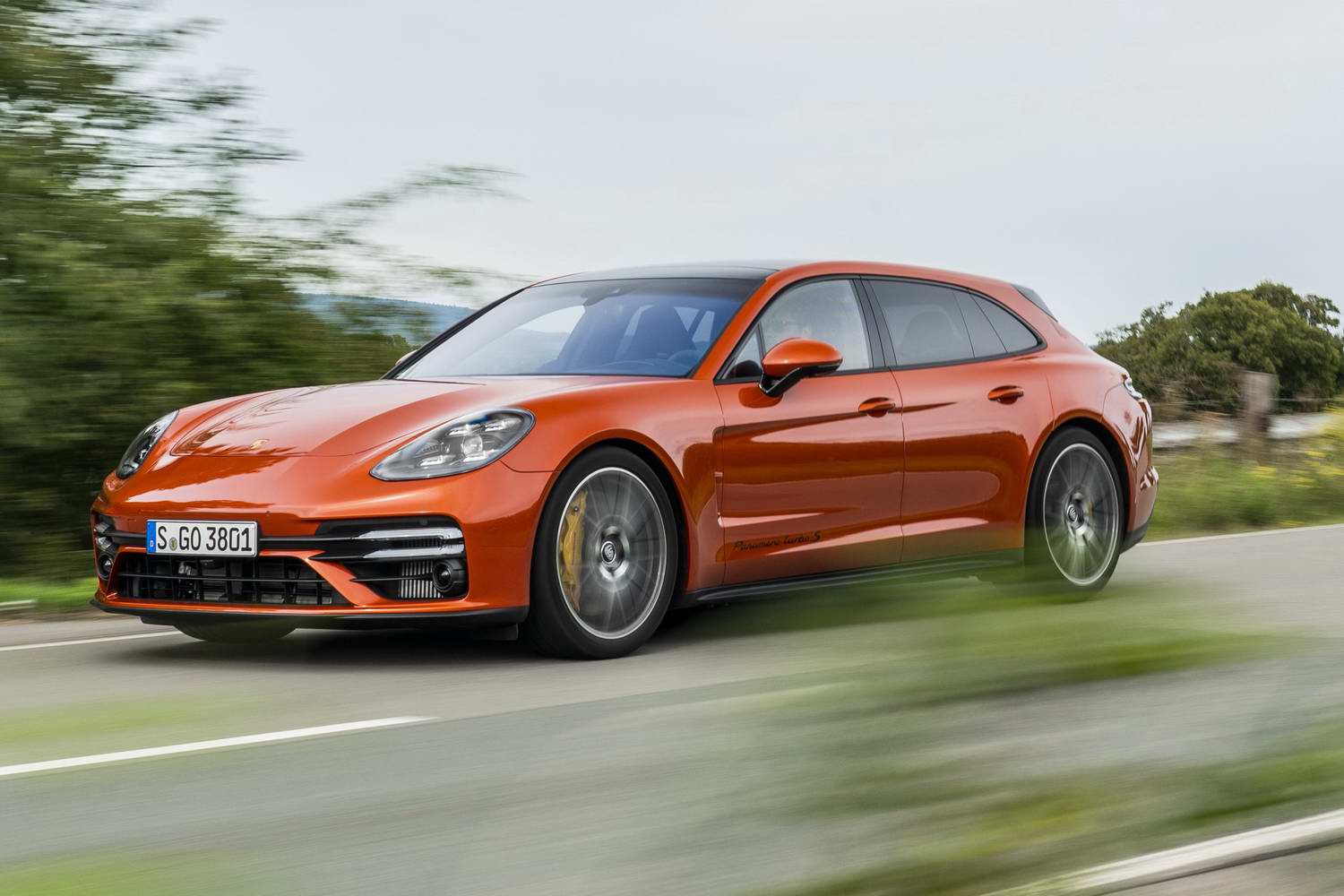We liked the current 'F90' BMW M5 when we first drove it in pre-production form, arguably because of its sophisticated new all-wheel-drive system, not despite the introduction of such a thing to a nameplate that has always been associated with rear-wheel drive. Now, four years later, and following on from the already sublime BMW M5 Competition is, undoubtedly, the ultimate interpretation of the BMW M super-saloon formula. Say hello to the sensational M5 CS.
In the metal
'Frozen Deep Green metallic' is the name of the paint colour on the M5 CS pictured, one of three available, and it is almost worth the price of this car alone. It works particularly well with the 'Goldbronze' accents elsewhere, as found on the kidney grille surround, the M gills on the front wings, the M5 CS badges and the stunning 20-inch forged alloy wheels.
As standard, those rims wear Pirelli P Zero Corsa track tyres, measuring 275/35 R20 at the front and 285/35 R20 at the rear, and within you'll see the also-standard M Carbon ceramic brakes. Don't be fooled by the red callipers. Buyers can choose to have them painted gold, as is usually the case for BMW's carbon ceramic brakes, but red makes for a better contrast against the gold wheels, we think. Just as importantly, they take 23kg off the 'unsprung' mass of the car.
Indeed, the M5 CS is some 70kg lighter than the M5 Competition. That's mostly down to the new carbon fibre parts. The bonnet is made from Carbon Fibre Reinforced Plastic (CFRP), for example, and has extra air vents in it. What you can't see from the outside, however, is that the 'M5 CS' logo is emblazoned across its underside, giving you further reason to inspect the carbon weave. The engine itself is covered with a stylised carbon fibre panel and the intake silencer is exposed carbon fibre.
The lightweight material is also used for the more protruding splitter up front, the aerodynamic diffuser at the back, the new boot spoiler and the same door mirror caps as fitted to the BMW M8 Competition.
The quad exhaust system, made of stainless steel, has also been restyled, but even with all that going on, the exterior item we're disproportionately excited about is the addition of yellow LEDs to the front lights. BMW's Laserlight technology is standard on the M5 CS, with darkened surrounds. The regular daytime running lights are white, but switch on dipped or main beams, and the L-shaped LED tubes turn yellow.
Those of us of a certain vintage may be reminded of old French cars. And in a roundabout way the BMW M5 CS's lights have something to do with France, as distinctive yellow lights in motorsport were introduced at Le Mans for the GT racers (as campaigned by BMW), so that drivers would be able to tell which class of car was behind them at a glance. We don't care what the reason for BMW to add them to the M5 was, they're just cool.
BMW undoes some of that cool a tad with the M5 CS's interior, which features imprints of the Nürburgring circuit on its headrests. Trying too hard? We think so.
Regardless, the cabin is a special place. There are just four seats, and all are of the latest M bucket style. The front pair are adjustable every which way, despite that, including backrest width variation. They get a weird solid lump at the front of the seat between your legs, which makes getting in a bit awkward at times, but they're fabulously supportive and somehow not uncomfortable after a long time behind the wheel.
On the subject of which, there's Alcantara trim for the steering wheel, carbon fibre gearchange paddles behind and the usual two red M mode buttons to quickly activate your favourite group of driving settings.
Alcantara is used for the headlining, too, while the centre console has been simplified in the name of weight saving. Special stitching, piping, floor mats and badges abound, while the CS logo can be seen on the dashboard and between the two rear seats.
It's a comprehensive overhaul inside and out.
Driving it
The suite of mechanical changes for the M5 CS isn't quite so far-reaching, though the suspension updates have been implemented to make better use of the sticky tyres, according to BMW. There's a 7mm ride height reduction, tweaks to the bushings and the adaptive dampers from the BMW M8. Those are claimed to be more comfortable and yet offer better control.
Under the bonnet is the same twin-turbocharged 4.4-litre V8 engine as before, but with peak power increased 10hp to 635hp. Maximum torque is unchanged at 750Nm. Nonetheless, the small increase, married with the weight reduction, has allowed for a 0.3-second reduction in the 0-100km/h sprint, now pegged at three seconds exactly. The M5 CS also gets a higher electronically limited top speed, of 305km/h.
Not that we ever complained about the performance of the M5 Competition... Suffice to say, this car feels a little sharper responding and its performance is very grown up indeed. You can choose to chase the rev limiter in each gear if you wish, or ride the significant torque instead. Either way, it's ridiculously rapid.
The eight-speed automatic gearbox is carried over, with various modes of operation, and it's a technically brilliant device, though some might miss the more immediate (if less smooth) operation of a dual-clutch system.
Our time in the M5 CS was limited to the track at Mondello, incidentally, which is a great venue for showing up the shortcomings of a road car chassis, and there's little to complain about. It's worth mentioning that, though the CS is 70kg lighter than the M5 Competition, it's still a relatively heavy car, so it's hard on its tyres and brakes when pushed.
Nevertheless, the carbon ceramic brakes never showed any hint of fade, with a reassuringly firm pedal lap after lap. What's more, the M5 is unerringly stable under heavy braking, even through the tricky braking zones in Mondello where the car is not lined up straight. That gives you confidence to really attack the circuit.
And when you arrive at the turn-in point, you'll discover how deliciously keyed into the road the front end of this car is. Turn the tactile Alcantara-trimmed wheel and response is instant, with useful communication coming through the front tyres, too. Our test car didn't have the Corsa tyres on, but even so, there was huge grip to lean on, and no small amount of adjustment.
What happens next depends entirely on the driving settings you've selected. As ever, you can choose different levels of engine response, damping and steering by quickly tapping the SETUP button on the centre console, and then program your favourite group of settings for quick access through the M1/M2 buttons on the steering wheel.
My personal favourite setup for anything other than a perfectly smooth road or track (i.e. everywhere in Ireland...) is Sport Plus for the engine, Comfort for the damping and Comfort for the steering.
Perhaps of more importance in the M5 is the setup of the M xDrive all-wheel-drive system. By default it's in '4WD' mode, which allows the car to feel like a rear-drive vehicle to a certain extent, but it's very stable and safe, effectively eradicating rear-end slip, certainly if the stability and traction control systems are left in their default 'on' setting.
You have to turn off the stability control to access the other options. 4WD Sport is just brilliant, allowing the driver to really wring the most out of the car, but with a little helping hand from the front axle when needs be. It allows full-on drifting if you have the room, and little slides anywhere you want, really. Most of the time it feels like a very well-sorted and stable rear-drive car in this mode.
Select 2WD and, as before, you're on your own. And, while it's not difficult to overwhelm the rear tyres with torque and slide the back end around if you're able (or spin if you're not...), the M5 isn't as unruly and undriveable in this setting as you might suspect. If anything, it lays the talents of the M5 chassis bare, and it really is marvellous.
All this customisation was offered in the M5 Competition, too, of course, a car that was also supremely capable. The M5 CS is a little sharper, a little faster and a little more engaging. It's BMW M at its best.
What you get for your money
You may need to sit down for this part, as the M5 CS costs a massive €241,415 in Ireland. That's some €68,000 more than the M5 Competition goes for, which sounds ludicrous when you put it like that. We're assuming that those that can afford such things won't be too bothered about the €2,400 a year motor tax.
No point listing all the equipment you get for the price, is there? The M5 was already generously equipped; you're paying for the CS add-ons detailed above. I suspect most people will be horrified by the price premium, but BMW knows its market and clearly there are enough buyers in the world to make the creation of such a car commercially viable.
Summary
No, the BMW M5 didn't need any more power or ability. Yes, the M5 CS is eye-wateringly expensive to buy and run. And yes, some collectors are likely to turn it into a 'garage queen' and never use it as it was intended. Nevertheless, none of that takes from how brilliant a creation it is, confirming that the BMW M2 CS was no exception from the BMW M rule. The M5 CS is a truly special and engaging super saloon, and we're extremely glad it exists.

